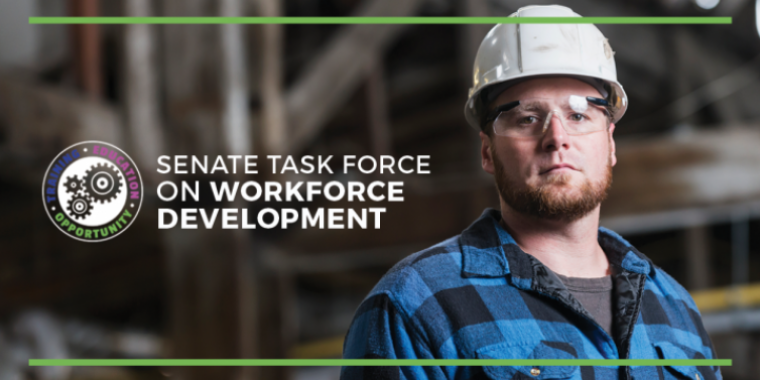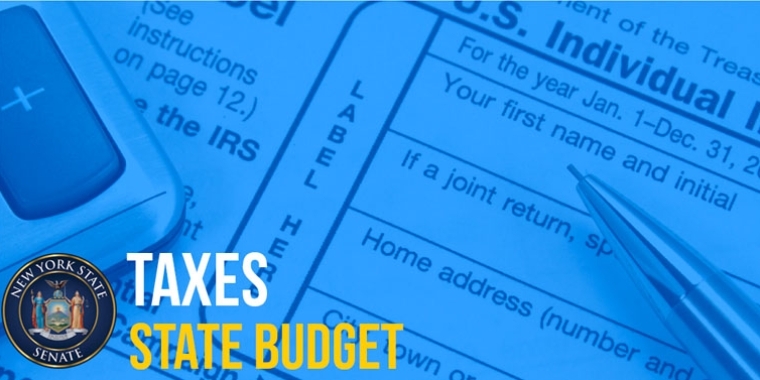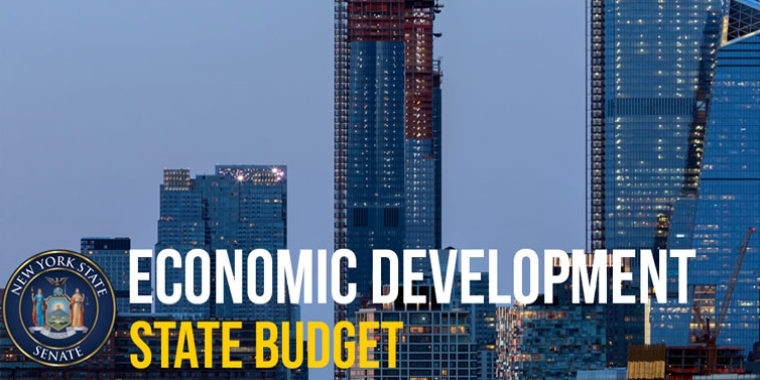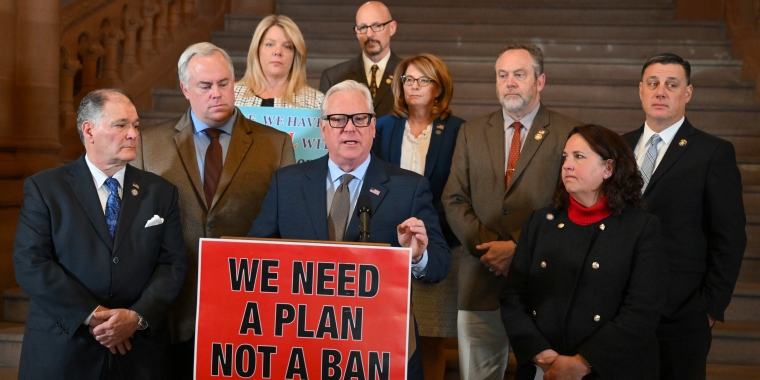O’Mara will continue to serve on Senate's Workforce Development Task Force
January 12, 2017
-
COMMITTEE:
- Task Force on Workforce Development

Elmira, N.Y., January 12—State Senator Tom O’Mara (R,C-Big Flats) will continue to serve as a member of the Senate Task Force on Workforce Development and help develop legislation to enhance New York’s focus on job training education and workforce development.
O’Mara was appointed to the task force in 2015.
“One of the critical challenges in developing and maintaining a high quality workforce regionally and statewide is to be able to anticipate future workforce needs and, from there, identify the most effective job training education and workforce development programs,” said O’Mara. “The work of the Senate Task Force on Workforce Development will continue to move us forward in this critical challenge.”
O’Mara highlighted a new law developed by the task force and co-sponsored by O’Mara in 2016 (S7967/A10578, Chapter 325 of the Laws of 2016) that expanded the type of data collected by the Labor Department to include forward-facing job statistics that can be used by employers and educators to accurately predict future needs and properly prepare the workforce for career opportunities.
At a series of statewide public forums last year task force members received input from leaders in business, education, and state and local governments, as well as other workforce experts, on how to better connect workers with regional employment needs. In May, the Task Force issued a report summarizing their findings and recommendations (see the full report attached above). O’Mara said that the task force report examined the state’s existing job training programs and recommended new strategies to strengthen employee readiness in ways that better meet the needs of existing private-sector employers and potentially attract new ones.
In 2016, the Senate approved a number of these recommendations including legislation to:
> expand New York State’s Pathways in Technology Schools (P-TECHs) and Early College High Schools to meet student demand and enhance educational performance;
> help increase access to career and tech programs at BOCES;
> improve participation in apprenticeships by promoting coordination between high school guidance counselors and local building trades councils. In line with this legislation, O’Mara spearheaded a provision included in the current state budget to help the Manufacturers Association of Central New York (MACNY) rekindle and expand apprenticeship programs in advanced manufacturing. Apprentice training (along with other methods like vocational education) was once the tried-and-true way of preparing skilled trades workers. As this type of training fell out of favor, it led to a decline in the availability of this skilled workforce. Now, with the resurgence of advanced manufacturing in New York, MACNY plans to work with manufacturers, the state Labor Department and the State University system to recreate these much needed training programs in high demand areas like CNC machining, industrial maintenance, and electronics technicians;
> create the Help Individuals Reach Employment (HIRE) program to help students who have graduated from a SUNY or CUNY institution but cannot find full-time employment; and
> enhances degree or certificate programs at community colleges in order to increase successful job placements for students.
While these additional actions did not receive Assembly approval, O’Mara said they would be reintroduced in 2017.
He also praised local programs like the Corning Community College (CCC) Welding Center in Elmira and Machine Tool Technology Facility in Horseheads, and the CNC Hybrid Machinist training program at GST BOCES, as models of how local schools and colleges can work together with local businesses and industries to develop the most effective, locally based job training and workforce development strategies.
“Training programs like these represent critical tools in the overall effort to make the Southern Tier economy more attractive to manufacturers, industries and other employers. They’re perfect examples of the type of locally based workforce development models and investments that the Senate will seek to encourage, enhance and expand across the board,” O’Mara said. “Are we doing enough in New York State to develop and encourage this type of a workforce development action plan? Our Senate task force will continue to work to answer that question and many others. We’re looking to provide a more focused picture of how New York’s trying to address the challenge and what we should be doing more effectively.”
O’Mara noted that Governor Andrew Cuomo’s 2017 “State of the State” message proposes several workforce development initiatives, including the creation of a $5-million “Tech Workforce Training Fund” that will “support innovative training and education solutions preparing New Yorkers for tech jobs.” The governor envisions the fund as a competitive grant program to encourage workforce development initiatives statewide.
Share this Article or Press Release
Newsroom
Go to Newsroom


